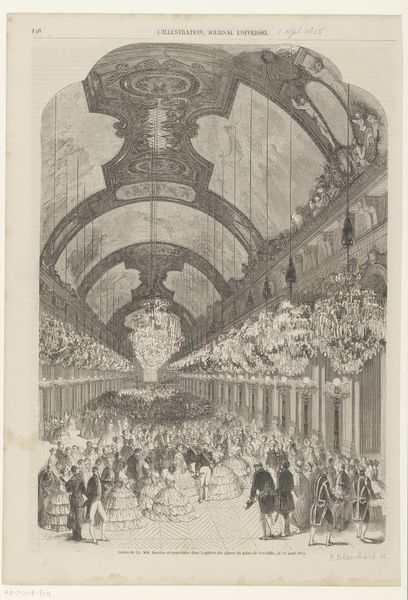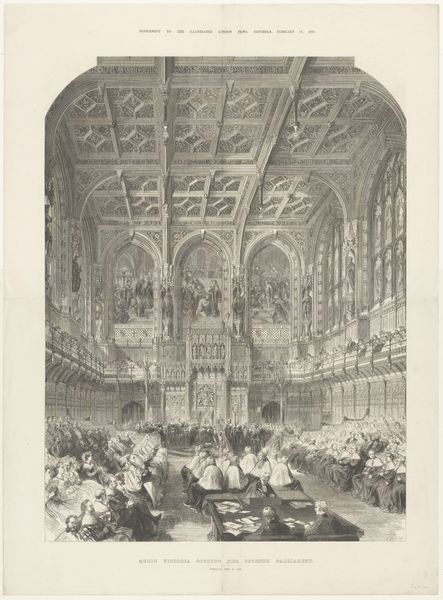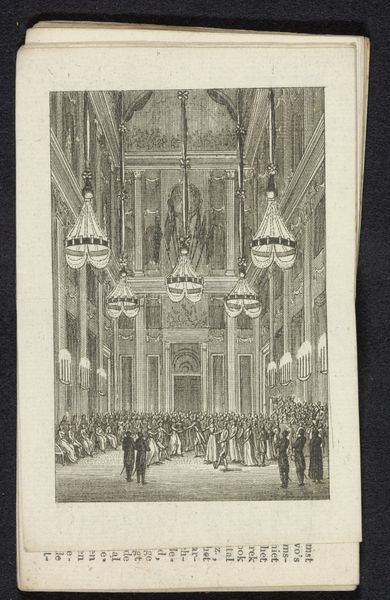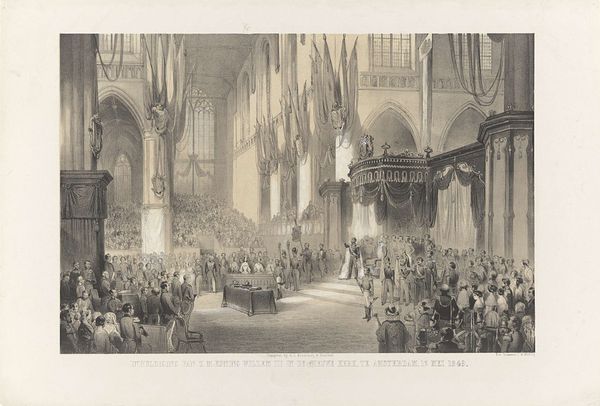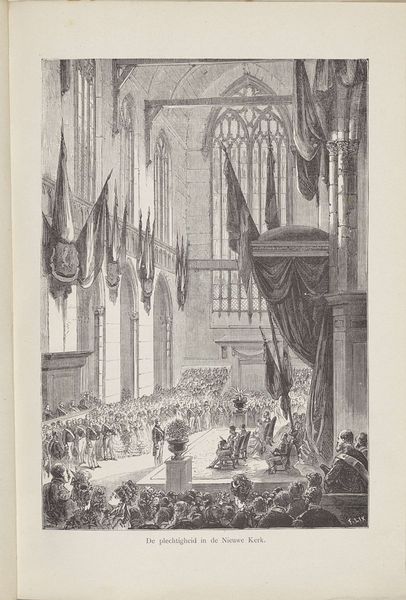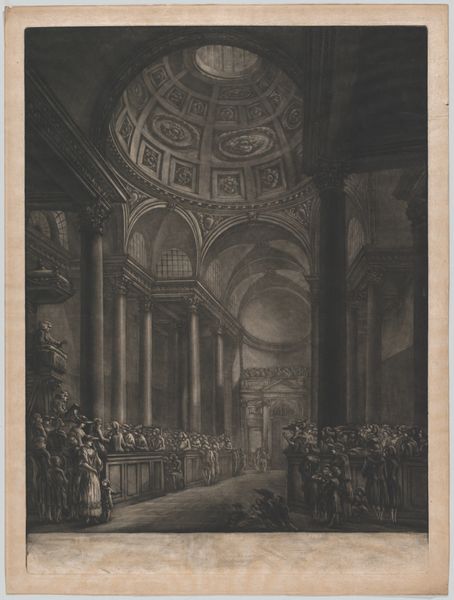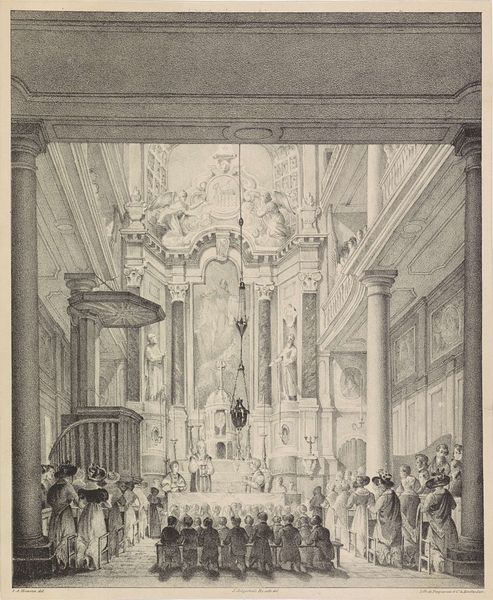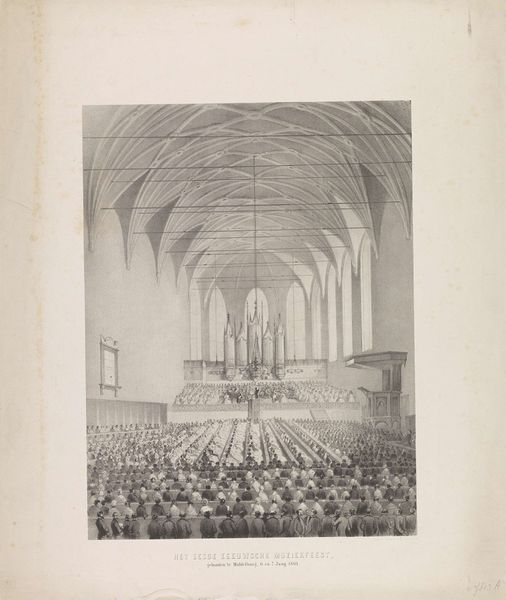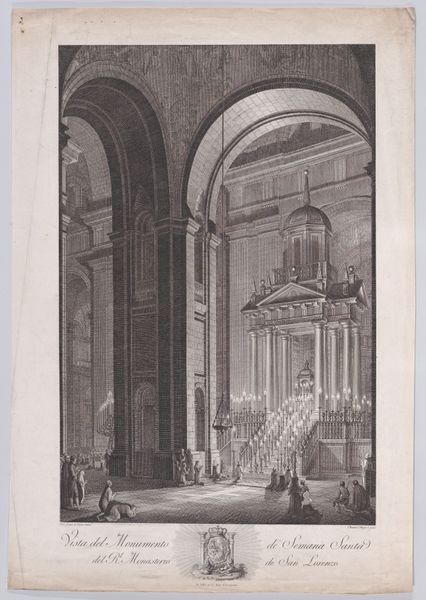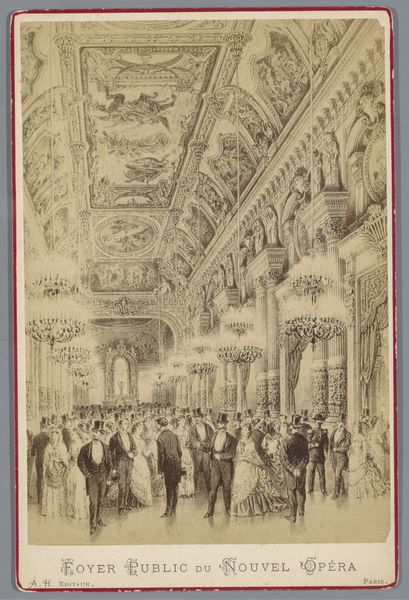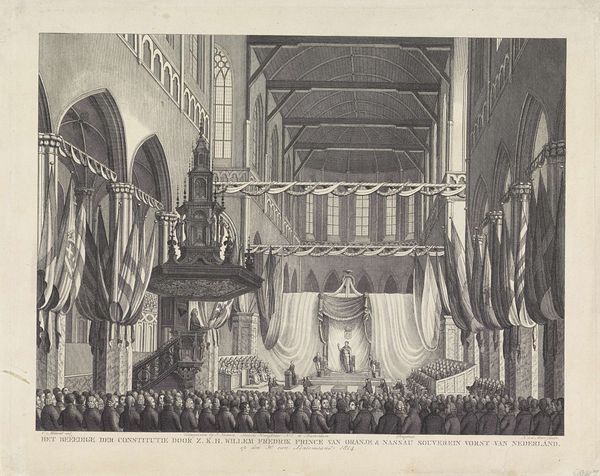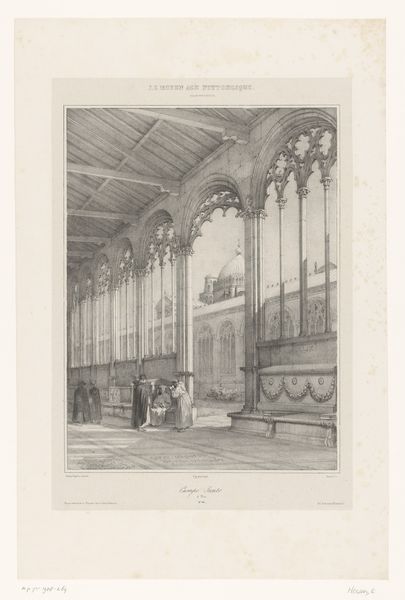
print, engraving
# print
#
line
#
cityscape
#
history-painting
#
engraving
#
realism
Dimensions: height 355 mm, width 236 mm
Copyright: Rijks Museum: Open Domain
Curator: Looking at this engraving entitled "Opening van de Victoria Gallery, 1852", currently held at the Rijksmuseum, one is immediately struck by the formality of the scene. Editor: The architecture just overpowers everything. It gives an almost oppressive atmosphere, even with the crowd, and that elaborate ceiling feels like it’s closing in. Curator: Indeed. This print by an anonymous artist, rendered with precise lines, captures a significant moment. It depicts the inauguration of the Victoria Gallery within the House of Lords, a testament to Victorian architectural ambition and political power. It visually asserts authority. Editor: It's intriguing to consider the historical and social dynamics at play here. Who are these people present? The focus appears to be almost entirely on men in positions of power. Where are the people who were essential to building that imposing structure and making it run? It begs the question of visibility and who is remembered. Curator: The intended audience for this image also tells a story. Prints like this were circulated to inform and impress the wider public with the grandeur of government achievements. Its realism conveys not only the scene, but an aura of power. Editor: Absolutely. I think about the function of images at this moment. They aren’t neutral; they’re constructing a very specific narrative around who wields power. And the artist makes specific choices about whose likeness is rendered, or not. That architecture isn't simply background; it’s an active participant in this visual rhetoric. Curator: Well put. And in addition, look closely at the way that the line work emphasizes that glorious coffered ceiling! The sheer detail conveys the sophistication of British craftsmanship, which also was often used to assert dominance on an international scale. Editor: So it prompts me to consider what aspects of national identity are at play within these meticulously etched lines. The space speaks of imperial Britain but it begs for closer analysis on what the work says about colonialism. How are resources gathered to create this impressive scene? What political narrative are the people commissioning and consuming this art are buying into? Curator: Considering those difficult questions enhances our understanding of Victorian England’s political theatre and art’s role within. It's a privilege to unravel this and appreciate how much visual culture influences how we perceive history today. Editor: Definitely. It encourages us to consider what visual narratives we're consuming today, and what they're leaving out. What’s not depicted is often as significant as what is.
Comments
No comments
Be the first to comment and join the conversation on the ultimate creative platform.
